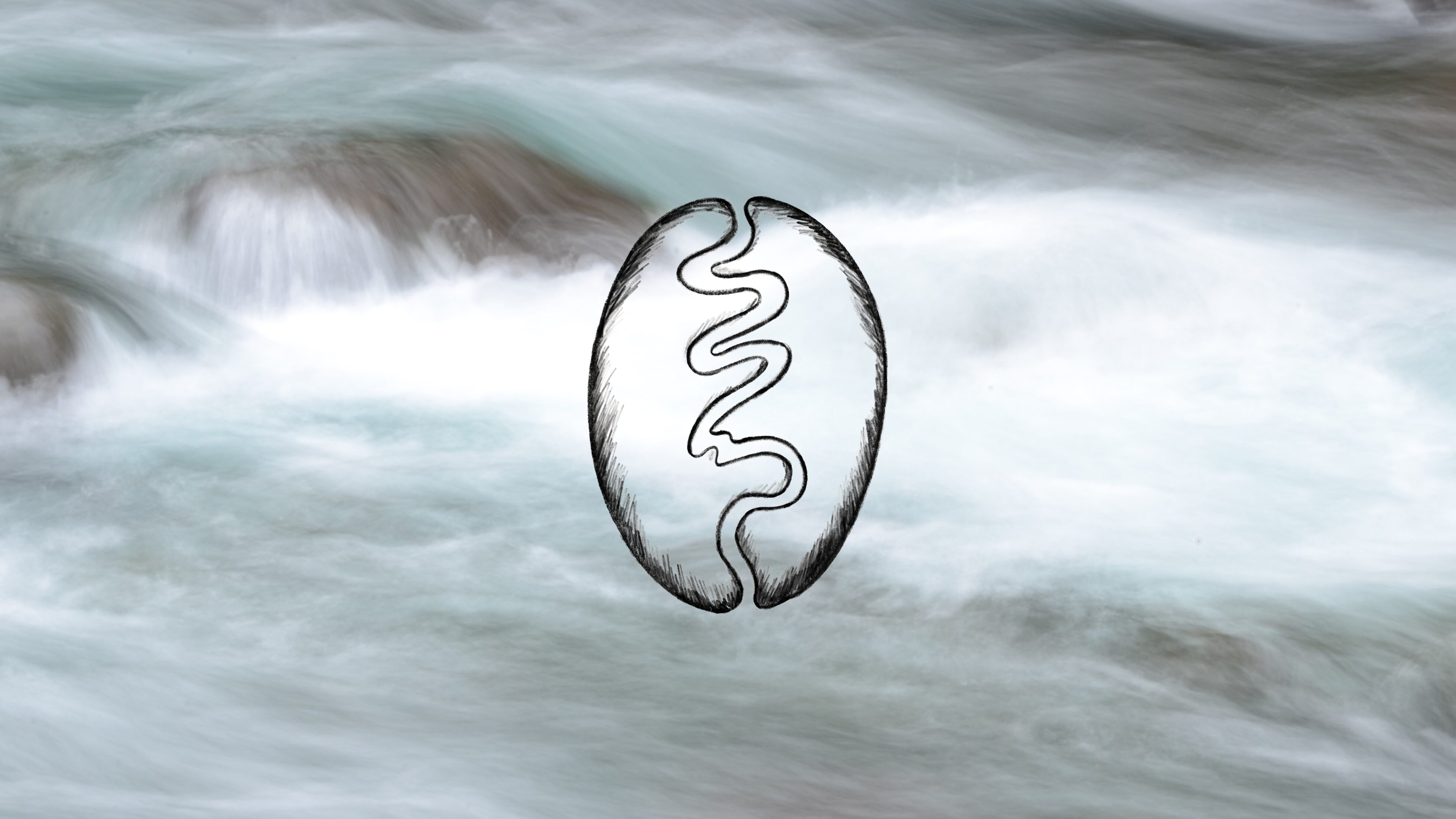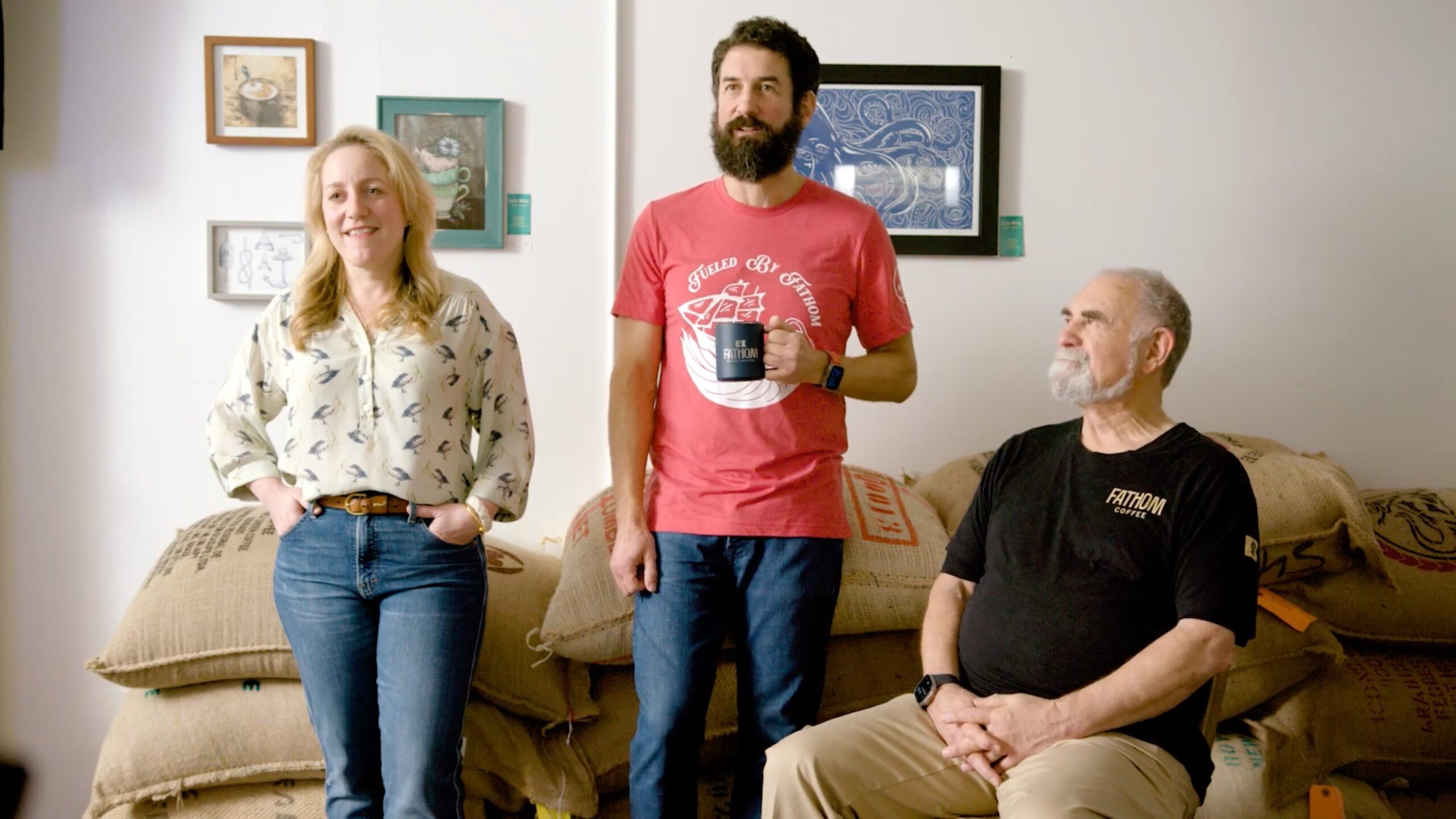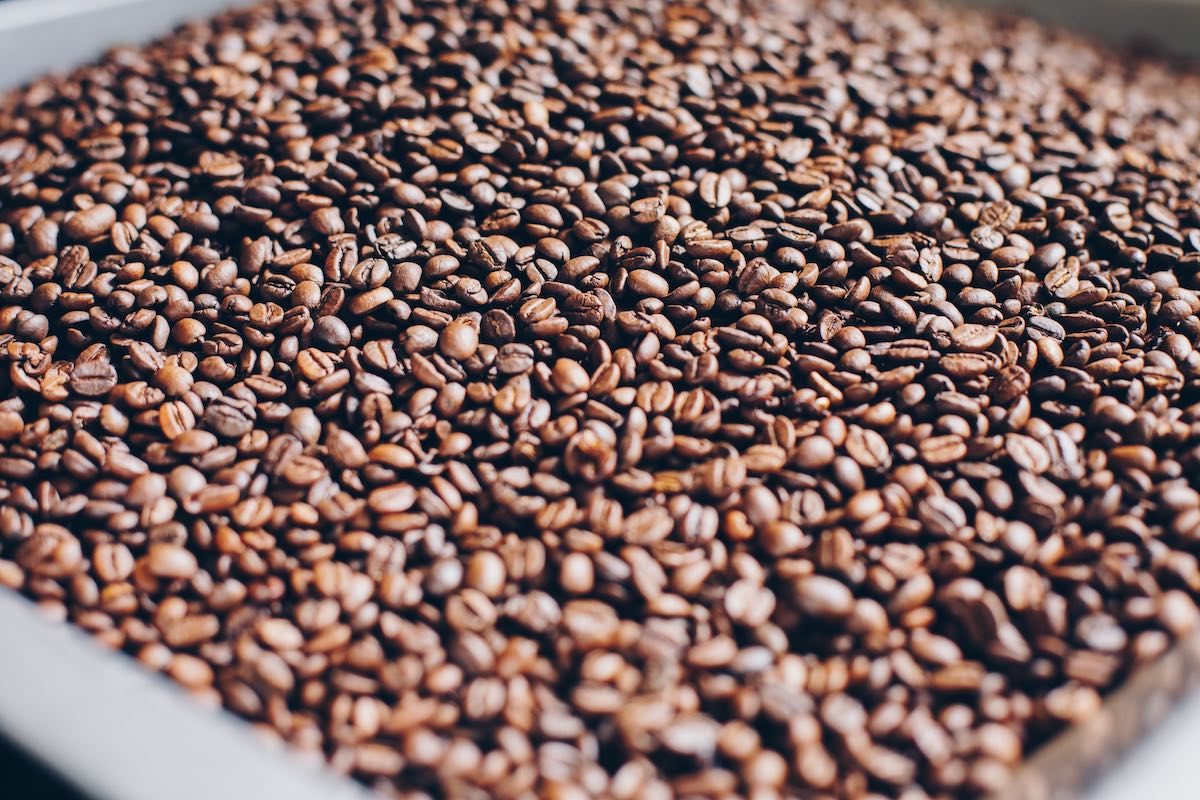Is it time to up your coffee words game? Wow your friends at the board game table? Throw in a little extra vocabulary that lightens up your next exchange with your regular barista? We’ve got your back.
We just so happened to pull together some of the most common coffee words, terminology, jargon, slang – whatever you want to call it – so you never again have to guess what the java junkies in your life are saying.
What are some other words or slang terms for coffee?
Here’s a rundown list to help spruce up your coffee vocabulary. Try them out to find which words flow most naturally. Then get ready to own the next time you or someone else brings up the hot stuff.
- Joe
- Java
- Brew
- Jitter juice
- High octane
- Brain juice
- Dirt
- Bean juice
- Caffeine infusion
- Morning jolt
- Rocket fuel
- Liquid energy
- Mud
- Go juice
- Perk
- Leaded (caffeinated) or unleaded (decaf)
- Morning fix
- Cupped lightning
- Hot stuff
- Cuppa (Just don’t use this term around the Brits. They save it exclusively for tea.)
By the way, if you’ve ever wondered why coffee adopted the name “Joe,” we don’t know. But a common theory is that it was named after a famous 19th-century roaster from New York City named Martinson Joe.
Two other theories are that it was a shortened version of “jamocha” or the signature drink of the average Joe. Others believe Josephus Daniels, Secretary of the Navy in the early 1900s, banned alcohol from naval ships, leaving coffee as the strongest accessible drink.
You’re A to Z Glossary of Coffee Words
Acidity
Acidity is the level of acid in your coffee. Highly acidic coffees are often described as bright, tart, or lively. Acidity can carry high flavor notes, like fruitiness, to bring out the taste.
Aged Coffee
Coffee can be kept in warehouses for years to reduce acidity levels and increase body. The result can be coffee beans with enhanced flavor…or old, stale coffee. (The method doesn’t always work out as planned.)
American Roast
Also called City Roast, American Roast is the point on the roasting spectrum where beans reach a rich, medium brown color. It’s the preferred, traditional roasting style in the U.S.
Arabica
The coffee plant Coffea arabica accounts for 70% of the world’s coffee production. It produces far superior quality coffee compared to the second most prominent coffee plant: Robusta.
Aroma
Aroma is the smell released from coffee after beans are freshly ground or grounds are freshly brewed.
Balance
A complex cup of coffee is balanced when the various flavors and acidity complement each other, without one component overwhelming the others.
Barista
A barista is a person who professionally prepares coffee for customers.
Batch Roaster
A batch roaster is a machine that roasts a specific amount of beans at once.
Bland
Coffees without much flavor, including low-quality Robusta coffees, are considered bland. Under-extracted coffee – brewed with grounds that are too coarse or when too little coffee is used – can also turn out bland.
Blend
Two or more types of single-origin coffees are mixed.
Body
Body is how rich or thick your coffee feels in your mouth.
Caffeine
Caffeine is a natural stimulant found in coffee, tea, cacao, and many other plants.
Chaff
These flakes cling to green coffee fruit and fall off during the roasting process.
Clean
A cup of coffee is “clean” when you can’t discern any defects in the flavor.
Complexity
Complexity refers to the range of tasting notes in a coffee. The greater variety of flavors, the more complex your coffee is. Flavors complement each other and give a cup depth.
Crema
Crema is the flavorful and aromatic foam that forms on espresso as air bubbles combine with the soluble oils in the coffee.
Cup of Excellence
Cup of Excellence is a prestigious annual coffee competition held in various countries to discover the highest quality coffees and award top farmers.
Cupping
Cupping is a process where professionals taste various coffees or roast profiles and compare them.
Dark Roast
This roast level produces a dark-brown appearance and sometimes an oily residue on the beans. Dark roast flavors can be more muted than lighter roasts, extracting notes like caramel, chocolate, and nut.
Decaffeinated
Coffee must have at least 97% of its caffeine removed to be considered decaffeinated.
Degassing
Gases (including carbon dioxide) build up inside coffee beans. After roasting and as the beans are ground, the gases are released.
Direct Trade
Direct trade is the act of purchasing coffee beans straight from farmers. This provides roasters with higher quality beans and producers with higher wages.
Dry (Natural) Process
Coffee beans are extracted (removed from the coffee cherry’s fruit or husk) after the fruit is dried to produce complex, fruity-flavored coffees.
Earthy
This term is a way to describe coffee that tastes and smells like wet soil or fresh earth.
Espresso Roast
Coffee is roasted a darker to decrease the acidity levels and increase the body, resulting in a richer, stronger-tasting brew.
Extraction
Extraction refers to pulling out the flavors and caffeine from coffee grounds during the brewing process to produce a quality cup of coffee.
Fair Trade
Fair trade is an arrangement that supports sustainable, responsible, and ethical working conditions and fair wages for farmers.
Filter Coffee
Any coffee brewing method that uses a water filter is considered filter coffee.
Finish
The flavors you taste after you take a sip of coffee and swallow is its finish.
Flavors
The tasting notes of coffee in terms of aroma, body, and acidity are its flavors.
French Roast
French Roast is a very dark, almost black coffee with rich flavor and less caffeine than lighter roasted coffees.
Full-City Roast
Full-City Roast is another name for medium-dark roasted coffee.
Green Coffee
Green coffee is simply unroasted coffee beans (seeds from coffee cherries).
Hard Bean
This coffee grows at an altitude of 4,000-4,500 feet above sea level, resulting in harder beans and fruit that matures slower.
High Grown
Arabica coffee that grows at an elevation of 3,000 feet above sea level or higher tends to be higher quality than lower-elevation coffees.
Hulling
Hulling is removing the “skin” or “parchment” from the coffee beans during processing and before sorting.
Italian Roast
Italian Roast is very dark roasted coffee with a black, almost burnt appearance.
Machine Drying
Machine drying uses machines rather than open patios to dry the coffee beans.
Micro Lot
A small, single lot (sometimes part of a larger plot of land) where a farmer produces coffee with specific characteristics is a micro lot.
Monsooned Coffee
“Monsooned Malibar” is a unique coffee harvesting process where producers leave the beans outside for months at a time. India’s monsoon rains and winds remove the beans’ acidity and create a unique flavor.
New Crop
Coffee is shipped and roasted quickly (within a couple of months) after harvest – when the beans are fresh and bright.
Organic
Organic beans are grown without added pesticides, herbicides, or other similar chemicals.
Parchment
This is the papery component, like a membrane, that encapsulates the coffee bean (and other types of fruit seeds) that may or may not be removed before roasting.
Patio Drying
Coffee producers lay their harvested coffee beans outside to dry naturally in the sun.
Peaberry
A coffee cherry usually contains two seeds (the coffee beans). A peaberry comes from a cherry that has only one seed. Peaberries can produce bright, fruity coffees.
Piston Machine
A piston machine is a semi-automatic coffee machine where the user manually controls part of the process.
Portafilter
A portafilter is a spoon-looking component of an espresso machine with a handle and a pod (puck) to hold ground espresso.
Puck
A puck is a compact pod that holds coffee in an espresso machine. Hot water is forced through the puck to brew the espresso.
Pull
Pull is the force that pushes water through tightly compacted coffee to produce an espresso (“pulling a shot”).
Pulping
Pulping is removing the outer skin of a coffee cherry.
Quakers
Quakers are coffee beans that don’t roast properly. They remain pale instead of darkening and are considered “defective.”
Roast
When roasting coffee, you take green beans and heat them to a certain temperature to create the desired appearance, aroma, and taste.
Roast Date
A coffee’s roast date is the specific day it was roasted.
Robusta
Robusta coffee grows at lower elevations than Arabica coffee, resulting in full-bodied and highly caffeinated coffee with a blander taste. Robusta is often used for cheaper blends and is considered inferior to Arabica.
Seasonal Coffee
You may find that you can only get certain coffees during specific times of the year when they’re “in season.” Different countries have different harvest times.
Shade-Grown Coffee
This Arabica coffee is grown in the shade of a tree canopy in a high-altitude rainforest to produce large and flavorful coffee beans. Shade-grown coffee may also offer many ecological benefits.
Shot
A shot of espresso is one fluid ounce: a single serving.
Silverskin
Silverskin is the thin layer that covers a coffee seed. It becomes a byproduct during the roasting process – when the beans expand and the silverskin (chaff) falls away.
Single Origin
Single-origin coffee beans come from a single region rather than various areas (to create a blend).
Sorting
Coffee sorting involves examining beans after harvest, roasting small portions, and separating them based on their size, volume, and other qualities.
Specialty Coffee
Specialty coffee is the highest grade of coffee available out of all single-origin or single-estate coffees.
Strictly Hard Bean
Used in some Central American countries, this term refers to coffee grown at an altitude higher than 1,200 feet. In Costa Rica, the term indicates the plants were grown above 4,000 feet.
Tamper
Tamper means to compress espresso into a puck to brew it.
Varietal
Varietal describes a coffee’s single specified variety or cultivar. Factors like growing conditions, altitude, location, and weather all impact the flavor of the coffee and shape its varietal. Examples of common coffee varietals include Typica, Bourbon, Heirloom, and Gesha.
Viennese Roast
Viennese Roast is another name for Espresso Roast or Full-City Roast.
Wet Processed (Washed Coffee)
Beans are extracted from coffee cherries (removing the skin and pulp from the beans) before the beans are dried.
Find Your Favorite Coffees at Fathom
Now that you understand all these coffee words a little better (okay, A LOT better), you can choose a coffee with the body, acidity, and flavor notes you’ll love. Order fresh beans online or visit Fathom Coffee in person at our Virginia Bean location. Our baristas can’t wait to serve you!



